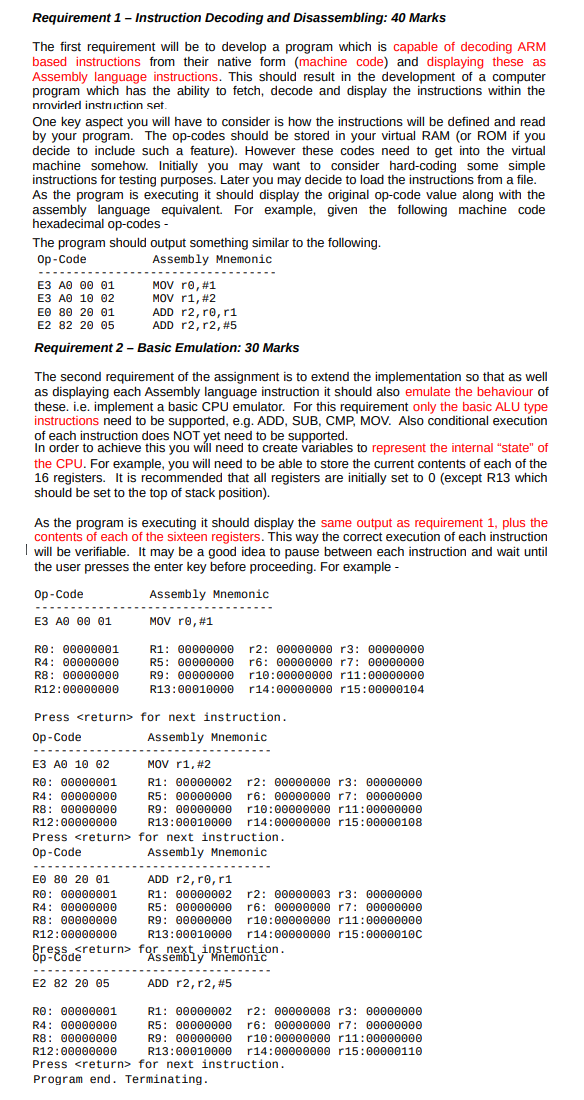(Solved): Need python code for following Requirement 1 - Instruction Decoding and Disassembling: 40 Marks Th ...
Need python code for following
Expert Answer
I'm happy to help with your assignment! However, since the requirements you provided are quite extensive, I won't be able to provide a complete Python code solution in this text box. However, I can give you some guidance on how to approach each requirement.
Requirement 1 - Instruction Decoding and Disassembling:
To decode ARM instructions from machine code to assembly language instructions, you can use a table of opcodes and their corresponding assembly language instructions. You can read in the machine code instructions from a file, and then use bitwise operations to extract the opcode and any associated operands. You can then use the opcode to look up the corresponding assembly language instruction in your table and print out the result.
Here's some example code for how you might define your opcode table in Python:
PLEASE REFER THIS STEP AND FOLLOW THE NEXT
